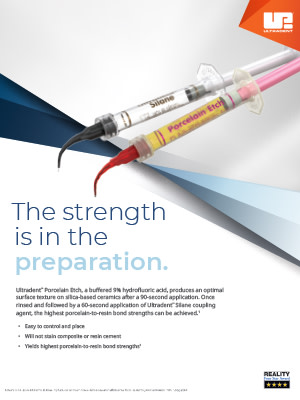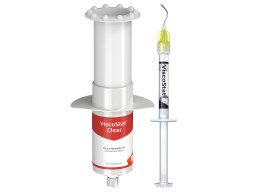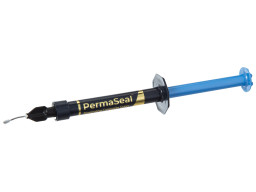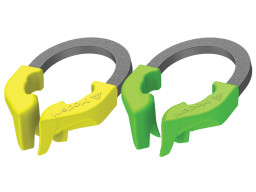Free Standard Shipping on All Orders $285+
Instructions for Use (IFU)
Safety Data Sheets (SDS)
Product Allergens
See any common allergens this product may contain >>Price breaks are offered on most items...
This amount is an estimate based on retail price. The actual amount due (shown at the final stages of your order) may be different from what is displayed here.
Return Policy
Items returned within 30 days of purchase with a return authorization number on the outside and inside of the return box will be credited 100%. Product returned between 31 and 60 days from purchase date is subject to a 20% restocking fee. Ultradent will not accept returns after 60 days. Errors in shipment must be reported within 14 days of invoice date. All return authorization numbers become invalid 90 days after date of issue. A return authorization number must accompany all returns to receive proper credit. Please contact Customer Service at 800.552.5512 for assistance.
Limited Warranty
Porcelain repair is growing in popularity because of improved techniques for treating porcelain. When done well, porcelain repair is a less invasive and more cost-effective way to extend the longevity of porcelain restorations. The Ultradent Porcelain Repair Kit contains all the products and tips needed for composite-to-porcelain, porcelain-to-metal, and porcelain-to-porcelain repairs.
- Includes all necessary precomposite-placement materials
- Yields high bond strengths
- Facilitates quick, easy repairs without mixing
- All chemistries in Ultradent Porcelain Repair Kit are certified gluten free
















Technical Details
Designed to Work Together
The contents of the Porcelain Repair Kit are designed to be used together. Porcelain Etch and Silane work together when etching porcelain to provide high porcelain-to-resin bond strengths. Studies have demonstrated that Silane, when used with Porcelain Etch and a quality bonding resin, yields the highest bond strength to porcelain when compared with other porcelain bonding products.1 PermaFlo™ Dentin Opaquer flowable composite creates an opaque foundation for natural-looking restorations. OpalDam™ light-cured resin barrier and EtchArrest™ acid barrier/neutralizer ensure protection to teeth and soft tissues throughout the procedure.
Porcelain Etch
Viscous, Buffered 9% Hydrofluoric Acid
Porcelain Etch is a buffered, gelled hydrofluoric acid designed specifically to etch fractured dental porcelain such as porcelain veneers, crowns, or inlays. It can also be used for etching porcelain crowns before bonding orthodontic brackets. It is buffered and gelled to minimize any irritation that could occur from the hydrofluoric acid vapor.
Easy to Control and Place
Porcelain Etch features a high visibility yellow hue so you can see exactly where it is placed. It is also viscous enough to stay where you place it.
Peak Universal Bond Adhesive
Universal Application
Peak Universal Bond adhesive is a 7.5% filled light-cured resin with an ethanol solvent carrier. It is ideal for direct and indirect bonding procedures, post and core procedures, and repairs of composite, metal, zirconia, and porcelain restorations.
PermaFlo Flowable Composite
Flowable Composite
PermaFlo flowable composite is light-cured, radiopaque, and methacrylate-based, with thixotropic properties that impart ideal flowability. It is 68% filled by weight, with an average particle size of 0.7μm and a low film thickness. It is strong and wear resistant and is effective at masking metal surfaces for natural-looking restorations.
OpalDam Light-Cured Resin Barrier
Easy to Place and Remove
OpalDam light-cured resin barrier is easily expressed directly where it’s needed in the mouth via the simple syringe-and-tip delivery. Simply use an explorer or other instrument to cleanly break the cured resin from undercuts and discard.
EtchArrest Acid Barrier/Neutralizer
Effective at Neutralization
EtchArrest acid barrier/neutralizer protects soft tissues and adjacent restorations by neutralizing acid etchants upon contact. The purple color provides high contrast against tissues and acid etchants.
Clinicals
Repairing a Porcelain Veneer
A fractured porcelain veneer can be immediately and predictably repaired chair-side with the use of composite resin and quality porcelain bonding techniques.

Before repair.

After repair.
Testimonials
“Ultradent’s Porcelain Repair Kit gives us a good, dependable system for repairing bridges and crowns that chip or break.”
Dr. Fred Waldschmidt – Bourbonnais, IL
“Ultradent’s Porcelain Repair Kit is the only one that works. It includes all the necessary materials and isn’t overpriced. All the products are quality."
Dr. Lloyd B. Schwartz – Troy, NY
“The Ultradent Porcelain Repair Kit actually works! I have made repairs, and patients haven’t had to come back. With other kits I have tried, the patient ends up having to come back due to refracturing."
Dr. Felicia Chu – Elgin, IL
Frequently Asked Questions
-
How should the surface of the repair be prepared?
Roughen ceramic and metal surfaces to be repaired using a microabrasion system with 50µm aluminum oxide particles. Alternatively (although less effective), use a diamond bur.
-
When should I use Porcelain Etch and Silane?
Porcelain Etch and Silane can be used for etching porcelain, lithium disilicate, lithium silicate and other silica-based materials. It is not indicated for use with zirconia.
-
Will the Porcelain Etch stain composites or resin cements?
No, Porcelain Etch is a predictable, stain-free chemistry designed to give high visibility without discoloring materials.
-
Can Porcelain Etch be used intraorally?
Yes! Porcelain Etch is ideal for use with intraoral porcelain etching, but a rubber dam or EtchArrest must be used to protect nearby tissue and restorations.
-
What substrates does Peak Universal Bond adhesive adhere to?
Like its name implies, Peak Universal Bond adhesive is truly a universal bonding agent. It provides excellent bond strengths on dentin, enamel, composite, metal, porcelain, and zirconia.
-
Can I use a chlorhexidine product like Consepsis™ antibacterial solution in conjunction with Peak Universal Bond adhesive?
Yes, but the appropriate time to use it will depend on the technique you use. If you’re using a self-etch technique, apply the chlorhexidine before etching. If you’re using a total-etch technique, apply chlorhexidine after the etchant has been rinsed and before Peak Universal Bond adhesive is placed.
Customers Also Bought
- Pameijer CH, Louw NP, Fischer D. Repairing fractured porcelain: how surface preparation affects shear force resistance. J Amer Dent Assoc. 1996;127(2):203-9.




